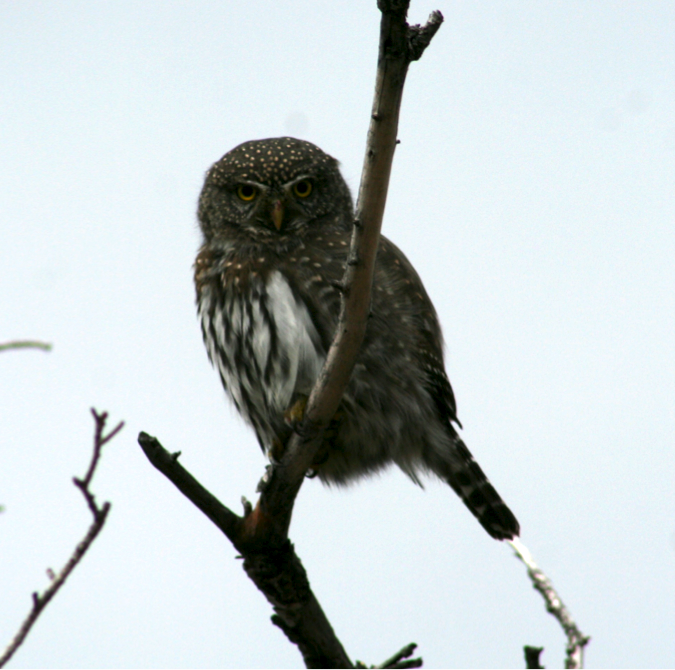
Northern Pygmy-Owls
Block title
 By: Kate StoneM.S. Avian Scientist
By: Kate StoneM.S. Avian ScientistNorthern Pygmy-owls are one of the most common yet least studied owl species in Montana. If their distinctive, monotone, daytime hoot doesn’t give them away, the alarm calls of chickadees and nuthatches, common prey, often alert us to their presence. Though we have not done any formal surveys for Pygmy-owls, detections through incidental observation, recording at acoustic monitoring stations, or capture in songbird or diurnal raptor nets are widespread across the property. We’ve observed them in floodplain forest, shrubby draws, riparian areas, and all developmental stages of upland conifer forest. How many pairs of Pygmy-owls do we have? How do they use the various habitat types? Do they use different areas for breeding, overwintering, or foraging? In the next year, we hope to use radio telemetry to help answer these questions.

We’ve seen a pair of Northern Pygmy-owls on West Baldy Ridge since 2010. Photo Kate Stone.

Alan Ramsey saw this Northern Pygmy-owl on the floodplain in February of 2011. Photo Alan Ramsey

Map of Northern Pygmy-owl detections over 3 years.

About the AuthorKate Stone
Kate graduated from Middlebury College with a B.A. in Environmental Studies and Conservation Biology in 2000. She pursued a M.S. in Forestry at the University of Montana where her thesis focused on the habitat associations of snowshoe hares on U.S. National Forest land in Western Montana. After completing her M.S. degree in 2003, Kate alternated between various field biology jobs in the summer and writing for the U.S. Forest Service in the winter. Her fieldwork included projects on small mammal response to weed invasions, the response of bird communities to bark beetle outbreaks and targeted surveys for species of concern like the black-backed woodpecker and the Northern goshawk. Writing topics ranged from the ecology and management of western larch to the impacts of fuels reduction on riparian areas.
Kate coordinates bird-related research at the MPG Ranch. She is involved in both original research and facilitating the use of the Ranch as a study site for outside researchers. Additionally, Kate is the field trip coordinator and website manager for the Bitterroot Audubon Society. She also enjoys gardening and biking in her spare time.
Kate coordinates bird-related research at the MPG Ranch. She is involved in both original research and facilitating the use of the Ranch as a study site for outside researchers. Additionally, Kate is the field trip coordinator and website manager for the Bitterroot Audubon Society. She also enjoys gardening and biking in her spare time.



















